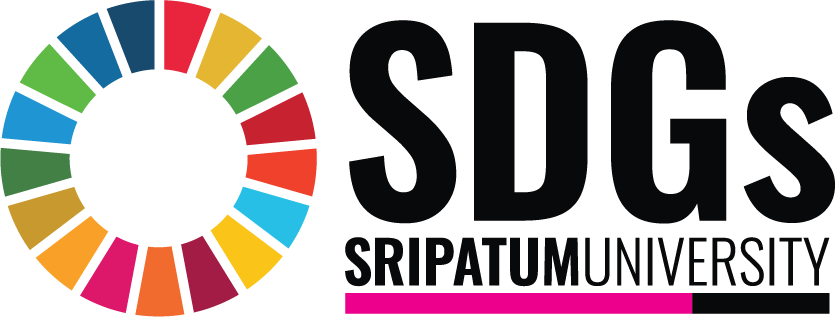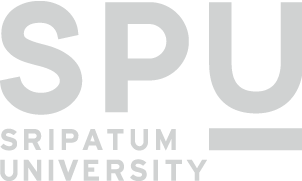Methodology guide
SDG 1 No Poverty
Why we measure
At least 10% of the world’s population live in extreme poverty, unable to fulfil the most basic needs – food,health, education, access to clean water and sanitation.
Universities need to be able to demonstrate how they are helping to address this problem through their work. As employers and economic hubs universities have a direct role in reducing poverty in their communities. By
giving people from poorer backgrounds quality education they help to remove intergenerational poverty.
Goals 2
SDG 2 Zero Hunger
Why we measure
The ability to feed the world is a key element of sustainable development. If done right, agriculture, forestry and fisheries can provide nutritious food for all. At the same time it can ensure rural development with people at the centre of the process, supporting the incomes of those who rely on agriculture.
Universities need to be able to demonstrate how they are contributing to end hunger, achieve food security and improved nutrition and promote sustainable agriculture.
SDG 3 Good Health and Well-being
Why we measure
Ensuring healthy lives and promoting well-being at all ages is essential to sustainable development. There is an urgent need to fully eradicate a wide range of diseases and address many different persistent and emerging health issues.
We are exploring how universities deal with specific conditions and diseases, and support their community.
Goals 4
SDG 4 Quality Education
Why we measure
A high-quality education should be an area where universities excel. Education is a key gateway out of inequalities, especially multi generational ones. In addition to improving quality of life, access to inclusive education can help equip locals with the tools required to develop innovative solutions to the world’s greatest problems. SDG 4 explores early years and lifelong learning. We are exploring how universities support early years, lifelong learning, and their nations through ensuring equality of access to their facilities.
Although the UN includes Education for Sustainable Development in SDG 4, we have chosen instead to measure that as part of SDG 17, as this is the mandatory SDG within our ranking, and in the case of Universities it is a key factor of partnership around the goals.
SDG 5 Gender Equality
Why we measure
Women and girls continue to suffer discrimination and violence in every part of the world. Gender equality is a fundamental human
right, and a foundation for a peaceful, prosperous and sustainable world. Providing women and girls with equal access to education is a key part of delivering gender equality, but universities also have a wider role to drive forward gender equality in their communities.
Universities and women: Here we are exploring how universities are providing access and then supporting academic progression of women.
SDG 6 Clean Water and Sanitation
Why we measure
Without water we can’t live. Water supports out agriculture and aquaculture. Clean water is vital. However, due to bad economics or
poor infrastructure, millions of people including children die every year from diseases associated with inadequate water supply,
sanitation and hygiene.
We are exploring how universities ensure access to water and
sanitation for all.
https://www.un.org/sustainabledevelopment/water-and-sanitation/
SDG 7 Affordable and Clean Energy
Why we measure
After water and food, energy is one of the key enablers of human life. Energy is central to nearly every major challenge and opportunity the world faces today and access to energy for all is essential. But energy needs to be available and affordable to all to allow future
development, and it needs to be clean in order to ensure that the development can be sustainable.
We are exploring how universities promote and support clean energy, both through research, outreach, and also in their own behaviour and usage.
Goals 8
SDG 8 Decent Work and Economic Growth
Why we measure
Decent work in safe and stable conditions is a vital component of helping people out of poverty, with the related aspects of reducing
hunger and increasing health. The rise of precarious employment, modern slavery, and uneven growth has created threats to a sustainable future. Universities as employers can lead the way, as teachers can educate for the future, and as innovators can develop
new and fairer ways of working.
We are exploring how universities live up to these expectations.
Goals 9
SDG 9 Industry, Innovation and Infrastructure
Why we measure
Investments in infrastructure – transport, irrigation, energy and information and communication technology – are crucial to achieving
sustainable development and empowering communities in many countries.
We are exploring how universities drive innovation through links to industry.
https://www.un.org/sustainabledevelopment/infrastructure-industrialization/
SDG 10 Reduced Inequalities
Why we measure
Equality needs to underpin every aspect of sustainability if the objectives of the SDGs are to be met. Although SDG 5 explores this
through the prism of gender, SDG 10 takes a broader look at the intersectionality of disadvantage. This disadvantage can be felt
through all of the other key issues raised by the SDGs – disadvantaged groups are both more likely to be unable to take advantage of progress and to suffer from the effects of climate change. We are exploring how universities are tackling inequalities: economic,
health based and international inequalities.
SDG 11 Sustainable Cities and Communities
Why we measure
Cities and communities must themselves be sustainable. More and more of the world’s population lives in urban centres, and this is
often the home of our universities too. Cities can be places of great innovation and opportunity, but they can also be home to intense
poverty and inequality. The interaction between universities and their communities, urban and rural, needs to be a positive one that
can last for generations.
We are also exploring how universities act as custodians of heritage and environment in their communities, a sustainable community must have access to its history and culture in order to thrive.
SDG 12 Responsible Consumption and Production
Why we measure
Much of the world’s economy is based around producing things for consumption. This drives the engine of industry. If we want the
world to develop sustainably, we need to understand how to be more responsible at both ends of this cycle. This means promoting resource and energy efficiency, having a sustainable infrastructure, and providing access to basic services
for all.
We are exploring how universities are working towards an efficient
use of resources and the minimization of waste.
https://www.un.org/sustainabledevelopment/sustainable-consumption- production/
SDG 13 Climate Action
Why we measure
Climate change is a crisis that will affect every part of society, and every country. Universities need to be at the forefront of
action to reduce the impact of climate change, especially amongst the poorest who will be the most affected.
We are capturing how universities are acting to address climate issues through research, low carbon use and education.
Goals 14
SDG 14 Life Below Water
Why we measure
The two SDGs that look at the broader ecosystem divide it into Life Below Water, and Life on Land. The oceans, and the rivers
and watersheds that link to them, are the largest part of our ecosystem. 40% of the world’s population lives within 100km of
the coast, and we all rely – directly or indirectly – on the sea.
We are capturing how universities are protecting and enhancing aquatic ecosystems like lakes, ponds, streams, wetlands, rivers,
estuaries and the open ocean.
Goals 15
SDG 15 LifeOnLand
Why we measure
This is the second of two SDGs that look at the broader ecosystem – the other being SDG 14: Life Below Water. Life on land is a
precious resource – we need to ensure that it is passed on to future generations, at a time when loss of biodiversity is an increasing
concern. Different universities will have responsibility for very different landscapes and the life within, but all have a responsibility
as stewards of their environment.
We are exploring how universities contribute to sustainably manage forests, combat desertification, halt and reverse land degradation,
and halt biodiversity loss.
Goals 16
SDG 16 Peace, Justice and Strong Institutions
Why we measure
SDG 16 and 17 explore some of the underlying factors that are needed in order to ensure delivery of the other SDGs. Peace and Justice go hand in hand – and indeed are vital for equity between people and countries. Supporting this we need our institutions to be strong
enough to maintain a focus on delivering the SDGs. This can range from individual justice – eradicating modern slavery and people trafficking – to ensuring that our countries have the evidence base needed to react appropriately to crises.
We are focusing on how universities can support, and be, strong institutions in their countries and promote peace and justice. It
explores universities’ research on law and international relations, their participation as advisers for government and their policies on
academic freedom.
Goals 17
SDG 16 Partnerships for the Goals
Why we measure
Sustainable development is the responsibility of every part of society, across the world. It cannot be achieved without linkages, across the goals, but also between institutions, governments, companies, NGOs, and people.
We are looking at ways in which universities support the SDGs through collaboration with other countries, the promotion of best practices and the publication of data and evidence. Unless all partners work together towards the SDGs, they cannot be achieved.
SDG17 is the only compulsory SDG for inclusion in the overall rankings. It is also worth a smaller proportion of the final score
in the overall table.
https://www.un.org/sustainabledevelopment/globalpartnerships/


